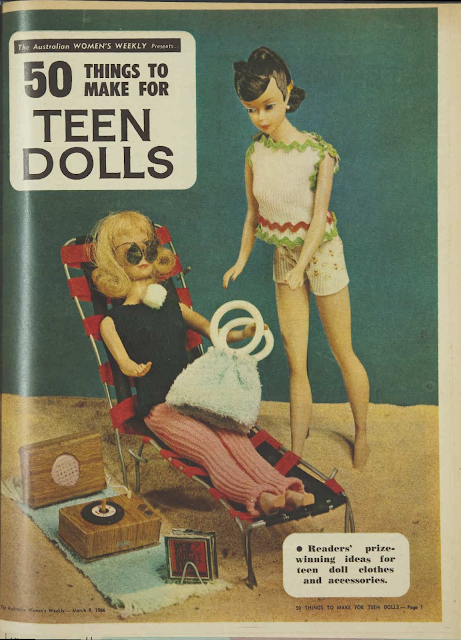Sewing Tips for Very Small Doll Clothes
* choose fabrics by the look and feel. The washability, fiber content, all that is irrelevant for a fashion miniature, but very important when it comes to a play doll. For a collector's doll clothes you want the clothes to sit well and drape nicely, like real size human clothes, because you are making a miniature.
This goes for print size (try to fit that to 1:6, 1:12, what ever scale doll you sew for.) For a play doll, see that the clothes can be washed in a washing machine, and that all the materials are color fast, that is, don't bleed when they get wet.
* scarves, handkerchiefs, and baby clothing make nice material for dolls' clothes.
* Most difficult fabrics to sew are thin fabrics, flimsy fabrics, loose fabrics and slippery fabrics. Things like chiffon, satin, lace, knits etc. Try sewing the material first before cutting the pieces. You might want to change your material.
* Pattern matching. I would be a little upset with that top on the right.
* use tools to guide the piece of clothing at the sewing machine. Things like tweezers, bamboo skewers, seam ripper etc. are helpful. Pins are often too thick and not helpful.

* hand sewing is a great alternative. After all, the seams are very short and you could use the control of hand sewing.
* it's better to iron pieces before sewing, because it can be very difficult to iron doll clothes. You can make yourself miniature ironing hams, sleeve boards etc. to help you with this, but often it's enough to just finger press the seams.
Often a skirt, cape or veil will just stick out stiffly, rather than falling into graceful folds. To solve this problem, put the garment on the doll. Tie a piece of ribbon or a strip of fabric around the part of the garment that needs fixing. Arrange the fabric folds in a pleasing way and steam it into place.
* turn the hems etc. by hand, by using a strip of fusible interfacing, with bias tape, tulle etc.

* now-a-days all doll clothes are fastened with velcro, but if you want to get the "authenthic" vintage feel, you use hook-and-loop fastening or snaps. They even make tiny zippers and buttons, but nobody makes buttonholes for those tiny buttons, they are used on the outside as decoration or fake buttoning.
Don't follow the pattern when you sew on the fastening, try the garment on the doll, and mark the correct placing of fasteners.
* keep trying the clothes on the doll as you sew, because in 1:6 scale, even 1/8 of an inch makes a huge difference in how the clothes fit. Also, different fabrics behave differently. Knits usually adjust easier to the doll's body than woven fabric, and stiffer fabrics need more help from the seams.
* If you make clothes for children's play toys, the clothes should be looser and very easily put on, taken off, and fastened. Try to sew 1 piece clothing, for example, if you need a laced vest, you applique it on the dress and add a velcro fastening on the back of the piece, the lacing is just decoration and never to be opened. If you make fashion miniatures, you can be as detailed, fitted, and complicated as you wish, and even bone the corset.
Turning Tight Corners
Sometimes fabric can get pulled down into the stitching hole of the throat plate when turning a tight corner, such as a collar might have. To solve this problem, insert a length of thread with a hand needle and thread near the end of the point before sewing:
Learn to use turning tools and how to turn narrow tubes.
There is a tool called "point turner", which is basically the same tool as "bone" in paper crafts.
You can also use knitting needles, crochet hooks, etc. Just make sure they don't have sharp points, because that can easily damage the fabric.
How to gather fabric and make ruffles
Part 3: All About Sleeves
Setting in sleeves is probably the trickiest part to sew on tiny doll clothes. The best way to do it is upside down, compared to the way sleeves are normally sewn in. Follow these steps for best results:
- Finish the bottom of the sleeve with a hem, trim or cuff.
- Lay the sleeve, right side facing up, next to the presser foot.
- Take the armhole of the body of the garment. Match up the edge
of the armhole with the edge of the sleeve, with right sides facing
each other.

- Put these matched pieces together underneath the presser foot and make a few stitches to start:
While sewing, stretch the inside curve of the armhole (which should be the upper piece) to fit the outside curve of the top of the sleeve (the lower piece), matching notches or other markings as you sew.


- Last, sew up the side seam of the top and sleeve seam.





Comments
Post a Comment